How to Critique Artwork
Describing the Work
-
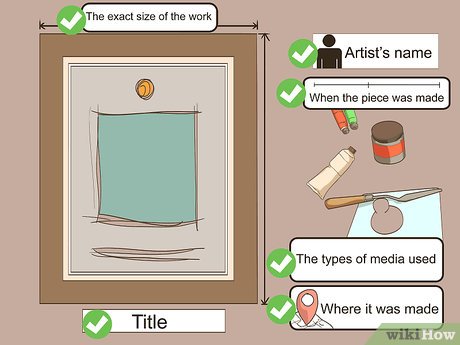 How to Critique Artwork Picture 1 Gather basic information about the work. This is the sort of thing you'd find on a museum or gallery label, or in the caption in an art book. Knowing the background of a piece can make a big difference in how you interpret and understand it. Start your critique by providing the following information:
How to Critique Artwork Picture 1 Gather basic information about the work. This is the sort of thing you'd find on a museum or gallery label, or in the caption in an art book. Knowing the background of a piece can make a big difference in how you interpret and understand it. Start your critique by providing the following information:- Title of the work
- Artist's name
- When the piece was created
- Where it was made
- The types of media used to create the work (e.g., oil paint on canvas)
- The exact size of the work
-
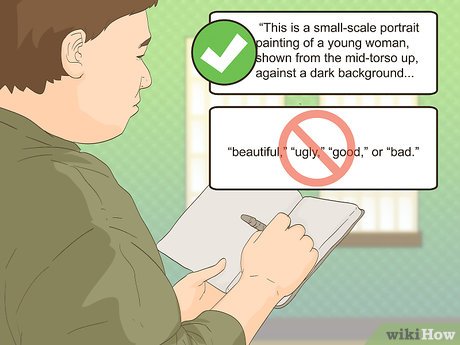 How to Critique Artwork Picture 2 Describe what you see. Using neutral terms, describe the artwork. Your description should include things like the form and scale of the work. If the art depicts figures or objects rather than abstract shapes, describe what is represented.[1]
How to Critique Artwork Picture 2 Describe what you see. Using neutral terms, describe the artwork. Your description should include things like the form and scale of the work. If the art depicts figures or objects rather than abstract shapes, describe what is represented.[1]- For example, you might say, 'This is a small-scale portrait painting of a young woman, shown from the mid-torso up, against a dark background. She is clasping her hands in front of her chest and looking up and slightly to the viewer's right. She wears a pink dress, and a long veil that falls behind her head.'
- Avoid using terms like 'beautiful,' 'ugly,' 'good,' or 'bad.' At this point, you're just talking about what you see, not judging the art!
-
 How to Critique Artwork Picture 3 Discuss the elements of the work. Now describe the work in more detail. Talk about the way the art uses these five basic elements of art and design: line, color, space, light, and shape.[2]
How to Critique Artwork Picture 3 Discuss the elements of the work. Now describe the work in more detail. Talk about the way the art uses these five basic elements of art and design: line, color, space, light, and shape.[2] -
 How to Critique Artwork Picture 4 Describe the use of line. Lines in a work of art can be either literal or implied. Different types of lines can create different moods or effects. For example:[3]
How to Critique Artwork Picture 4 Describe the use of line. Lines in a work of art can be either literal or implied. Different types of lines can create different moods or effects. For example:[3]- Curved lines can create a calming effect, while jagged lines might feel harsher, or create a sense of energy.
- Rough, sketchy lines create a sense of movement and freedom, while smooth, solid lines feel more still and carefully planned.
- A line of sight or action might be suggested by the arrangement of figures and objects within a scene. For example, a group of figures all looking or pointing the same way can create an implied line that draws your eye through the work in a particular direction.
-
 How to Critique Artwork Picture 5 Talk about how color is used in the work. Make note of characteristics like hue (red, green, blue, etc.), value (lightness or darkness), and intensity. Look at overall color schemes, and think about how the colors work together.[4]
How to Critique Artwork Picture 5 Talk about how color is used in the work. Make note of characteristics like hue (red, green, blue, etc.), value (lightness or darkness), and intensity. Look at overall color schemes, and think about how the colors work together.[4]- For example, do the colors clash, or are they harmonious? Does the work use a variety of colors, or is it monochromatic (all shades of blue, for example)?
-
 How to Critique Artwork Picture 6 Describe the use of space in the work. 'Space' refers to the areas around and between objects in a work. When talking about space, focus on things like depth and perspective, overlapping of objects, and the use of empty space versus space crowded with details.[5]
How to Critique Artwork Picture 6 Describe the use of space in the work. 'Space' refers to the areas around and between objects in a work. When talking about space, focus on things like depth and perspective, overlapping of objects, and the use of empty space versus space crowded with details.[5]- If you are describing a two-dimensional work of art, like a painting, talk about whether or not the work creates the illusion of three-dimensional space and depth.
-
 How to Critique Artwork Picture 7 Describe the use of light in the work. Light in a work of art can look warm or cool, bright or dim, natural or artificial. Take a little time to talk about the role of light and shadow in the work.[6]
How to Critique Artwork Picture 7 Describe the use of light in the work. Light in a work of art can look warm or cool, bright or dim, natural or artificial. Take a little time to talk about the role of light and shadow in the work.[6]- If you're talking about a two-dimensional work, like a painting, your focus might be on how the artist creates the illusion of light.
- For a three-dimensional work, like a sculpture, you could discuss how actual light interacts with the work. For example, is the surface reflective? Does the sculpture cast interesting shadows? Are some parts of the sculpture more shadowed or well-lit than others?
-
 How to Critique Artwork Picture 8 Make note of the way shape is used in the work. Are the shapes in the work geometric, with straight lines and perfect curves, or are they more natural? Is the work dominated by any one particular type of shape, or do you see a variety of different shapes?[7]
How to Critique Artwork Picture 8 Make note of the way shape is used in the work. Are the shapes in the work geometric, with straight lines and perfect curves, or are they more natural? Is the work dominated by any one particular type of shape, or do you see a variety of different shapes?[7]- Shapes play an important role in both abstract and representative works. For instance, in a portrait of a bride by James Sant, there are notable triangle shapes made by the drape of the bride's veil around her shoulders and the clasped hands in front of her chest.
- Once you notice one shape in a painting, look to see if it is repeated anywhere else.
0 / 0
Part 1 Quiz
Why is it important for you to learn about the artwork's background?
Not quite! Of course, it's important to know the origin of a style and what has come before, but you want to be sure that you're judging this piece on its own merit. There's a better option out there!
That's right! Knowing the background of the piece, what inspired it, and where the artist is from can help you better understand the intention and themes behind it. Read on for another quiz question.
Not exactly! There are many terms to keep in mind when critiquing a work of art. You want to consider space, light, lines, elements, and more. Still, this is true of any work, no matter its background. Guess again!
Close! The more you know about the piece, the better you will be at critiquing it. Still, you won't always get the chance to chat with experts, so it's important that you learn how to gather that information all by yourself. There's a better option out there!
Want more quizzes?
Keep testing yourself!Analyzing the Work
-
 How to Critique Artwork Picture 9 Discuss how the work uses the principles of composition. Once you have described the work, it's time to analyze it, or discuss how it all comes together. Start by talking about how the work is composed, keeping a few basic ideas in mind. For example:[8]
How to Critique Artwork Picture 9 Discuss how the work uses the principles of composition. Once you have described the work, it's time to analyze it, or discuss how it all comes together. Start by talking about how the work is composed, keeping a few basic ideas in mind. For example:[8]- Balance: How do the colors, shapes, and textures in the piece work together? Do they create a balanced or harmonious effect, or is the piece imbalanced in some way?
- Contrast: Does the work make use of contrasting colors, textures, or lighting? Contrast can also be found in the use of different shapes or contours, like jagged versus curved lines, or geometric versus natural shapes.
- Movement: How does the work create a sense of movement? Is your eye drawn through the composition in a particular way?
- Proportion: Do the sizes of the different elements in the work appear the way you would expect, or are they surprising? For example, if the work shows a group of people, do any of the figures look larger or smaller than they would in real life?
-
 How to Critique Artwork Picture 10 Identify the point(s) of focus of the work. Most works of art have one or more points that are designed catch your attention and draw your eye. In a portrait, this may be the face or eyes of the subject. In a still-life, it could be a centrally-placed or well-lit object. Try to identify which parts of the work are emphasized.[9]
How to Critique Artwork Picture 10 Identify the point(s) of focus of the work. Most works of art have one or more points that are designed catch your attention and draw your eye. In a portrait, this may be the face or eyes of the subject. In a still-life, it could be a centrally-placed or well-lit object. Try to identify which parts of the work are emphasized.[9]- Look at the work and make note of which feature(s) jump out at you right away, or keep drawing your eye back to them.
- Ask yourself why your eye is attracted to the feature(s) in question. For example, if you find yourself fixating on one figure in a group, is it because that figure is larger than the others? Are they closer to the viewer? More brightly lit?
-
 How to Critique Artwork Picture 11 Look for themes in the work. Identify a few key themes, and discuss how the artist used the elements of design (color, light, space, shape, and line) to express these themes. Themes might include things like:[10]
How to Critique Artwork Picture 11 Look for themes in the work. Identify a few key themes, and discuss how the artist used the elements of design (color, light, space, shape, and line) to express these themes. Themes might include things like:[10]- The use of a color scheme to give the work a particular mood or meaning. See, for example, the paintings of Picasso's Blue Period.[11]
- Symbolism and religious or mythological imagery. For example, look at the use of figures and symbols from classical mythology in Renaissance works like Botticelli's 'Birth of Venus.'[12]
- Repeating images or motifs within a work or group of works. For a good example of this, look at how plants and flowers are used in many of the paintings of Frida Kahlo.[13]
0 / 0
Part 2 Quiz
When critiquing a piece of art, you will not find any contrast between:
Nope! Color contrasts are actually some of the most obvious places to find contrast! The use of dark and light or bright and muted colors can make a statement or tell a story. Choose another answer!
Not quite! The use -- or lack -- of light in a painting has long been a way of making art more dramatic and lifelike. Artists have been using the contrast between shadows and light sources for hundreds of years. Pick another answer!
Nice! Of course, you will want to determine where the focus or focuses of the painting are. These are the points designed to draw your attention, and the center of attention of the piece of art. You may find contrast in or near the focal point, but the contrast will be caused by other elements, not the focus itself. Read on for another quiz question.
Not exactly! Contours are often used to create contrast in a piece. Are the lines jagged or straight, the buildings rough or smooth? These sort of contrasts can help to set the theme and emotional feeling of the piece. Click on another answer to find the right one...
Want more quizzes?
Keep testing yourself!Interpreting the Work
-
 How to Critique Artwork Picture 12 Try to identify the purpose of the work. In other words, what do you think the artist was trying to say with the work? Why did they create the work? Try to summarize the overall meaning of the work, as you see it.
How to Critique Artwork Picture 12 Try to identify the purpose of the work. In other words, what do you think the artist was trying to say with the work? Why did they create the work? Try to summarize the overall meaning of the work, as you see it. -
 How to Critique Artwork Picture 13 Describe your own reaction to the work. Now it's time to get a little more subjective. Think about how you feel while looking at the work. What do you think is the overall mood of the work? Does it remind you of anything (ideas, experiences, other works of art)?[14]
How to Critique Artwork Picture 13 Describe your own reaction to the work. Now it's time to get a little more subjective. Think about how you feel while looking at the work. What do you think is the overall mood of the work? Does it remind you of anything (ideas, experiences, other works of art)?[14]- Use expressive language to talk about your reaction to the work. For example, is the mood of the work sad? Hopeful? Peaceful? Would you describe the work as beautiful, or ugly?
-
 How to Critique Artwork Picture 14 Back up your interpretation with examples. Use examples from your description and analysis of the work to explain why you think and feel the way you do about the piece.
How to Critique Artwork Picture 14 Back up your interpretation with examples. Use examples from your description and analysis of the work to explain why you think and feel the way you do about the piece.- For example, 'I believe that James Sant's portrait of a young bride is intended to give a sense of the bride's spiritual devotion. This is indicated by the line of the composition, which draws the viewer's eye upward, following the upward gaze of the subject. It is also suggested by warm light, coming from a source somewhere above the young woman.'
0 / 0
Part 3 Quiz
What might you say about the work at this stage?
Not quite! By this point, you have already done an objective inventory of the piece, noting its origin, medium, and style. Your tone should remain professional, but you don't need to be academic at this point. Click on another answer to find the right one...
Try again! Of course, by now you no longer need to remain the impassive observer, but you still want to maintain a level of professionalism in your writing. Click on another answer to find the right one...
That's right! After you've gone through the piece objectively, learning about the origin, medium, style and more, you can now begin to take stock of what the painting makes you feel. Use expressive, personalized adjectives here. Read on for another quiz question.
Not exactly! If you're writing a journalistic review or article, of course, keep to the tone of the publication. Still, when you're scribbling out notes for your analysis, as you will be doing at this point, don't worry so much about hitting that right tone. Pick another answer!
Want more quizzes?
Keep testing yourself!Judging the Work
-
 How to Critique Artwork Picture 15 Decide whether you think the work is successful or not. Your goal here isn't necessarily to decide whether the art is 'good' or 'bad.' Instead, focus on whether you think the work is 'successful.' For example, think about the following:
How to Critique Artwork Picture 15 Decide whether you think the work is successful or not. Your goal here isn't necessarily to decide whether the art is 'good' or 'bad.' Instead, focus on whether you think the work is 'successful.' For example, think about the following:- Do you think the work says what the artist wanted it to say?
- Did the artist use their tools and techniques well?
- Is the art original, or does it imitate other works?
-
 How to Critique Artwork Picture 16 Explain how you are judging the work. Once you have decided on a few aspects of the work to judge, clearly state the focus of your evaluation. For example, you might say that you are judging the piece on how well organized it is, how well done it is technically, and how successfully it portrays the intended mood or themes.
How to Critique Artwork Picture 16 Explain how you are judging the work. Once you have decided on a few aspects of the work to judge, clearly state the focus of your evaluation. For example, you might say that you are judging the piece on how well organized it is, how well done it is technically, and how successfully it portrays the intended mood or themes. -
 How to Critique Artwork Picture 17 Summarize why you think the work is successful or unsuccessful. In a few sentences, explain your judgment of the work. Give specific reasons for your judgment, using your interpretation and analysis of the work.
How to Critique Artwork Picture 17 Summarize why you think the work is successful or unsuccessful. In a few sentences, explain your judgment of the work. Give specific reasons for your judgment, using your interpretation and analysis of the work.- For example, 'I believe this work is successful because the use of light, shape, gesture, and line all work together harmoniously to portray the mood of the subject.'
0 / 0
Part 4 Quiz
What kind of question can help you determine if the work is "successful" or not?
Not exactly! While art is known for being beautiful, that isn't always the case. The art may be very successfully depict a terrible story or inner turmoil that the artist has experienced. Beauty isn't an indicator of "success." Guess again!
Close! It's important to be aware of the work's background because that will help you determine if the piece imitates those that have before or if it is original. Still, the piece isn't required to represent its background or culture in order to be successful. There's a better option out there!
Almost! This is a challenging question to answer, so you'll want to approach it from a different angle. Ask yourself a question like "Does the artist use their tools and techniques well?" to better ground your analysis of its success. Click on another answer to find the right one...
Absolutely! Even in a contest, we still want to ultimately judge the artwork against itself. If the piece properly exhibits the artist's intent, then that is one important way to measure its success. Read on for another quiz question.
Want more quizzes?
Keep testing yourself!You should read it
- See where is One Piece Stampede, when is the schedule?
- Latest Second Piece code and how to enter code
- Code Pixel Piece Roblox, the latest Pixel Piece code
- Create an explosion effect piece by piece
- Real-life locations in One Piece
- Latest Code Project One Piece June 2021
- One Piece: 5 names that will be Zoro's biggest obstacle
- Top best One Piece games on Roblox
- How to Make an Illustration Portfolio
- McDonald's chicken piece shaped like the character in Among Us is being sold for $ 39,877
- The world of One Piece may have a 4th type of haki
- How to create One Piece cover images for Facebook and YouTube

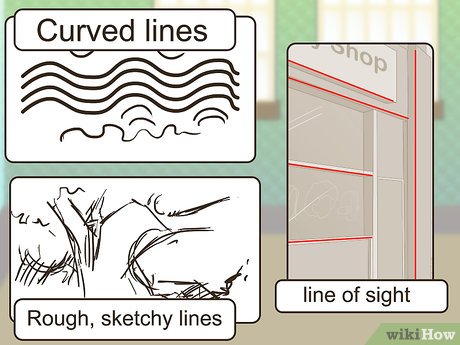
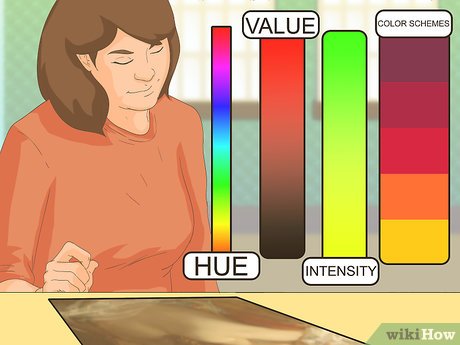
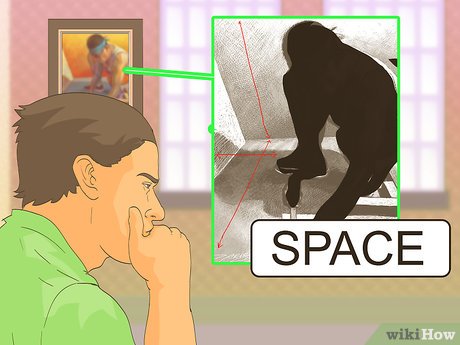

















 How to Write a Critique in Five Paragraphs
How to Write a Critique in Five Paragraphs How to Choose Artwork for Your Bedroom
How to Choose Artwork for Your Bedroom How an AI art creation tool enhances your everyday images
How an AI art creation tool enhances your everyday images How to Title Your Work of Art
How to Title Your Work of Art 28 street art works are extremely creative and impressive
28 street art works are extremely creative and impressive How to Make Your Illustrations Look Professional
How to Make Your Illustrations Look Professional